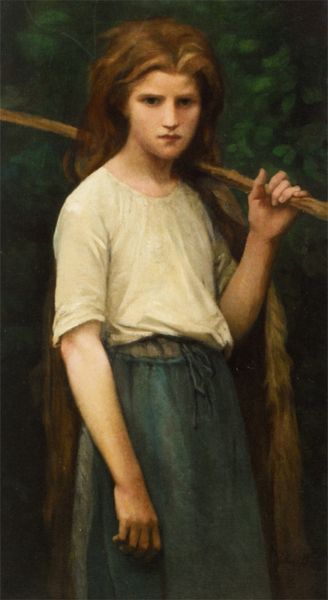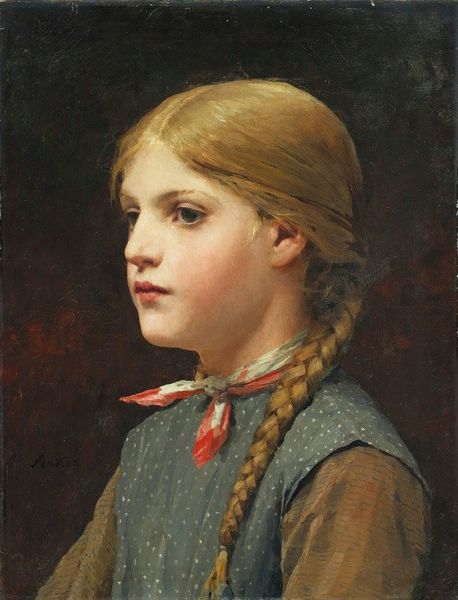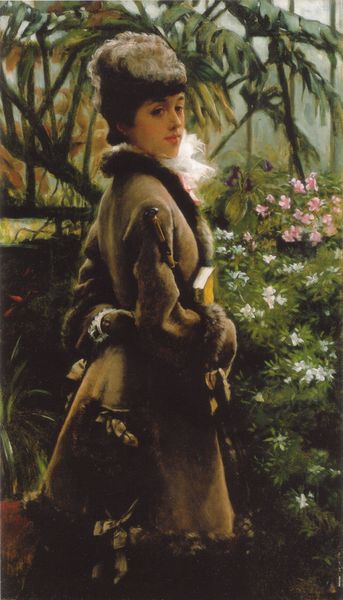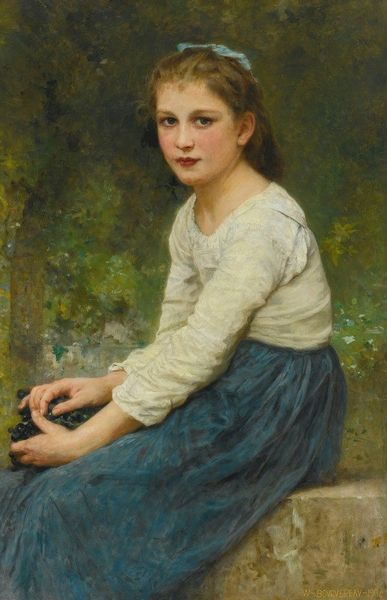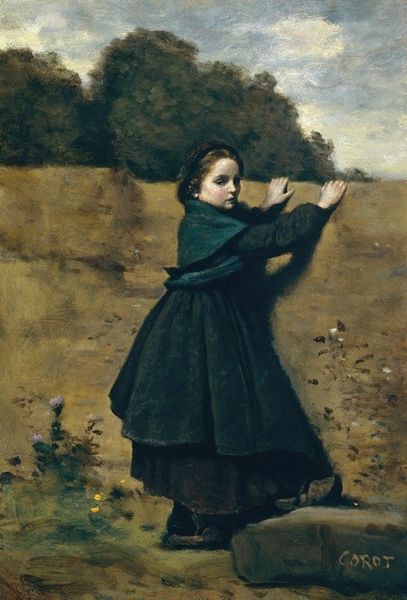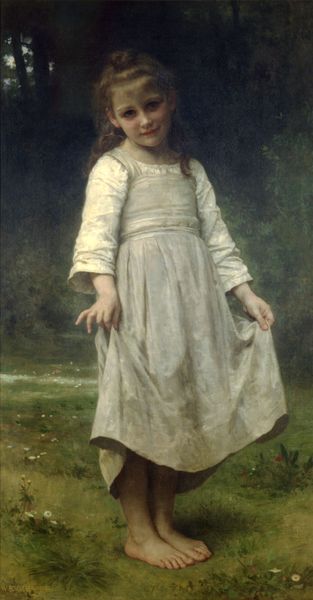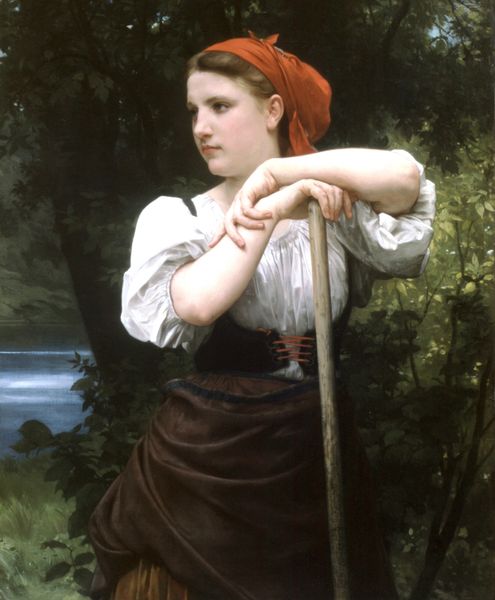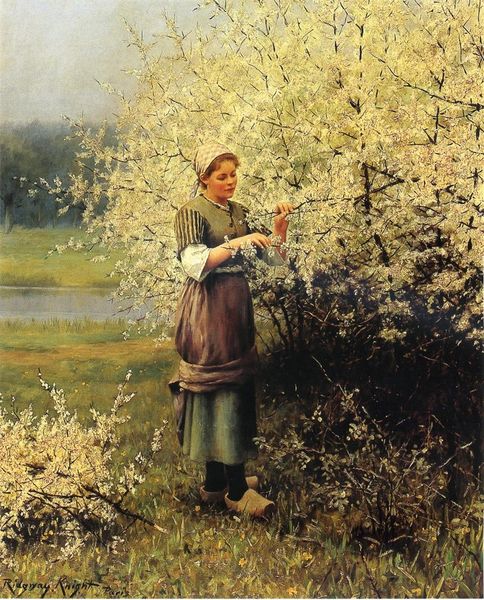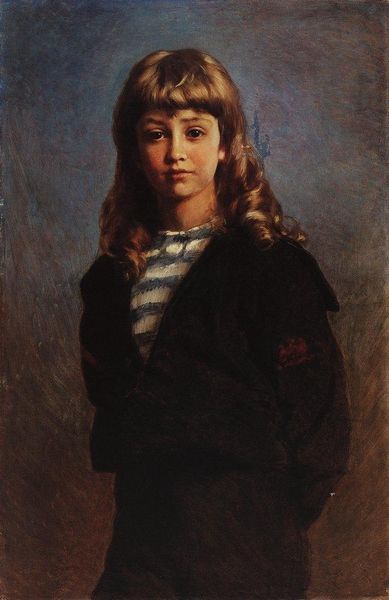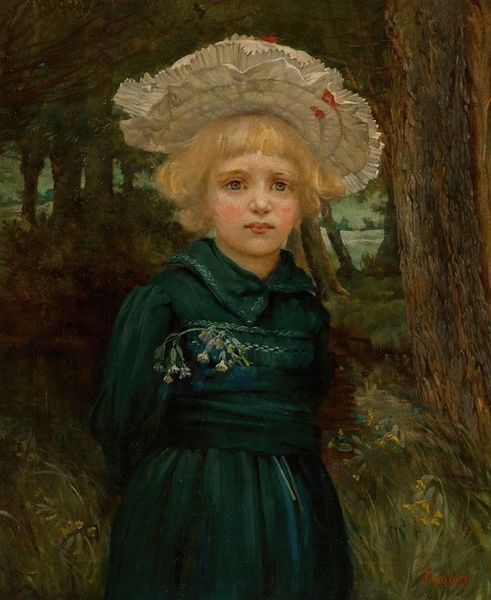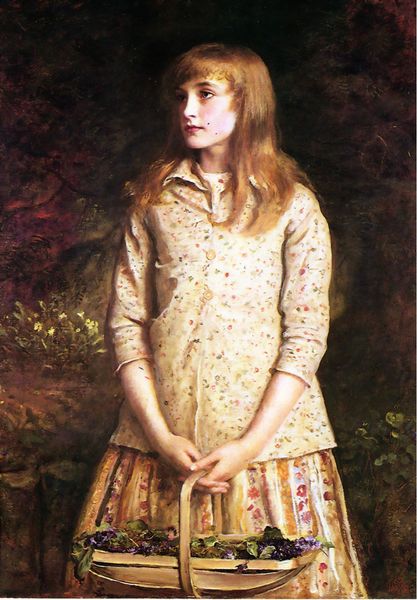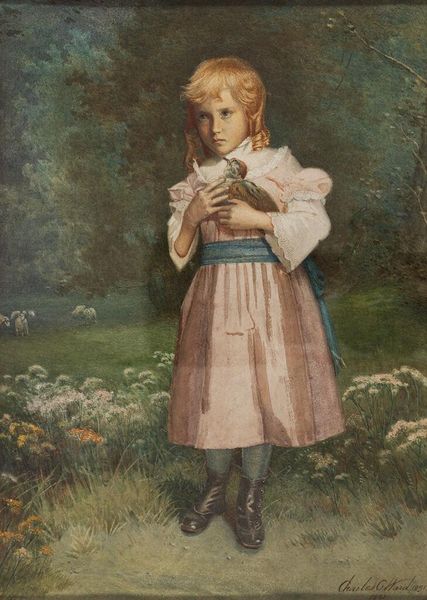
painting, oil-paint
#
portrait
#
painting
#
impressionism
#
oil-paint
#
landscape
#
oil painting
#
genre-painting
#
realism
Copyright: Public domain
Curator: Jules Bastien-Lepage painted "Young Girl" in 1882. It's a captivating oil on canvas that resides firmly within the realms of Realism and Impressionism. Editor: My first impression is of a wistful melancholy, reinforced by the muted palette and the girl’s downcast gaze. The thick brushstrokes surrounding her lend the image an almost tactile quality. Curator: Absolutely. This painting appears against the backdrop of late 19th-century France, where societal norms heavily impacted young women's roles. I wonder, to what extent does the artwork subvert or reinforce those gendered expectations? Does the artist attempt to dignify peasant labor by depicting a young worker? Editor: The tension in this artwork originates from the juxtaposition of raw, earthy colors alongside delicate details like the wildflowers scattered at her feet. Note also how the artist utilizes the impasto technique, almost sculpting the texture to pull her figure from the verdant chaos. Curator: Indeed. Look closely at the way her worn clothing suggests the realities of working-class life. However, I’d like to resist essentializing the sitter as merely a "peasant girl." This runs the risk of romanticizing hardship without interrogating the actual socio-economic constraints present. Can we also interpret her direct gaze as resistance? Or maybe passive acceptance? Editor: True. The light, or lack thereof, reinforces this contemplative atmosphere, drawing all attention onto the child. There’s something haunting about how her figure exists between these patches of contrasting tone and the background of muted detail. Curator: Considering Bastien-Lepage's Realist leanings, I think it would be productive to explore how such representations perpetuate social structures. Her youth—itself vulnerable—combined with visible signs of labour might spark a critical inquiry of exploitation. Editor: Perhaps. Either way, its lasting impact comes not from answering these social questions explicitly, but rather, from posing them—almost invisibly—in compositional form. Curator: Reflecting on it, one sees a profound sensitivity to issues around class, gender, and representation that continues to resonate. Editor: It’s true; Bastien-Lepage created something visually stunning and, indeed, subtly unsettling.
Comments
No comments
Be the first to comment and join the conversation on the ultimate creative platform.
